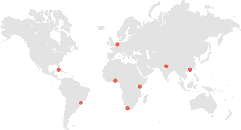Dalang is a migrant neighborhood with a very young and floating population. It faces the absence of a social or cultural life for workers and a lack of public facilities. Dalang is currently upgrading its industry and its urban infrastructure. Students of the Chinese University of Hong Kong, China Development Institute, Technical University of Delft and the University of Amsterdam study the social and urban conditions of Dalang in order to propose new strategies for achieving more social sustainability in Dalang.
Current conditions
Dalang is located in the southeast of Bao’an district to the north of Shenzhen central city area. Bao’an district has the largest population of migrant workers of all the districts in Shenzhen, according to the 2010 Shenzhen census. Dalang covers an area of 37.84 km², about 70% of which is hilly and mountainous landscape. There is the picturesque Yangtai mountain to the south and Nitou mountain to the north. There are six water reservoirs and several tree-lined landscape corridors. The water preservation area that is included in the Ecological Control Line covers 52% of the total Dalang area. The built area comprises 17.8 km², with 270,000 long-term residences.
The Dalang neighborhood office was formed on April 29th, 2006 and is part of the Shenzhen Longhua new district, which was officially established five years later on December 30th, 2011. At present, Dalang neighborhood office governs five community workstations (Dalang, Langkou, Tongsheng, Gaofeng and Longsheng) and twenty community committees. The total population is about 500,000 people, among which there are just 8640 residents registered with Hukou. Over 98% of the population is made up of migrant workers. The total population density is about 28,100 people / km². The modest Hakka culture and immigrants’ culture exist side by side and complement each other. Dalang neighborhood is a relatively underdeveloped region; when compared to the whole Bao’an district, Dalang’s socio-economic conditions lag behind, especially with regard to city infrastructures, public utilities and facilities.
However, over the past five years Dalang neighborhood has achieved rapid economic growth. In 2011 there were 283 above-scale enterprises and industries, and 73 businesses with a yearly production value of over 100 million Yuan. There are now 22 well-known brand-enterprises settled in Dalang’s industrial garment agglomeration. The advance of fashion industries, electronics and IT industries has gradually grown. The connectivity of transportation networks has also become more convenient.
Main urban problems
Despite this renaissance of sorts, there remain several urban problems in Dalang neighborhood. The most pressing of these is that the urban infrastructure is underdeveloped. As a traditional industrial area, Dalang’s main urban development method is to rent out factory buildings built by individual investors to enterprises. Because of the lack of systematic urban planning, housing and factories are mixed up and the building quality is relatively low. This relates to another major issue for Dalang, which is that the area’s main economic pillar is manufacturing industries. Thus, the development of service economy is relatively stagnated.
Socially, Dalang faces the challenge of a young population and the fluidity of immigrant workers. According to the 2010 census, the majority of Dalang residents are under the age of 30. Among the 440,000 migrant workers in Dalang, only about two thirds have applied for a resident permit (for people who need to stay in the district for more than half year). Survey results show that young factory workers tend to jump between jobs. The educational level of the migrant workers is also relatively low. This contributes to the low integration level of the communities. There is a lack of social or cultural life for workers and a lack of community (public) facilities. Between factory and home, these young workers have nowhere to enjoy their leisure time. The workers have limited interaction with each other, unless they come from the same cities or regions. Broadly seen, these new migrants also seem to have less sense of family responsibility than the last generation and less interest in saving money.
Planning goals: visions for the "twelfth five-year" development
1. Fashion “silicon valley”
New development will be based on Shenzhen’s garment industry agglomeration. The goal is to improve the city infrastructure and services at a faster speed and to make sure that by 2013 all the projects for new enterprises will be started. The goal is to form a comprehensive platform for garment research and development, design, exhibition and publication, brand-making, education, marketing and logistics. There is also a plan to regenerate the old industrial park and the surrounding areas of the garment industrial base and launch the project “Fashion Street”. By 2020, the garment industrial base is to become a domestic and internationally well-known creative center. There will be a creative fashion institute, Dalang international fashion channel as well as a new Shenzhen-Dalang national fashion festival.
2. Ecological Dalang
New development will be based on the planning of the northern and southern mountainous areas, while taking into consideration the ecological preservation districts such as the Jixikeng water reservoir and Dalang ecological park. The aim is to upgrade city infrastructures and service facilities more quickly to strengthen ecological preservation plans, to promote green development and to form a green, more livable city.





